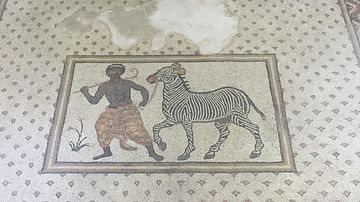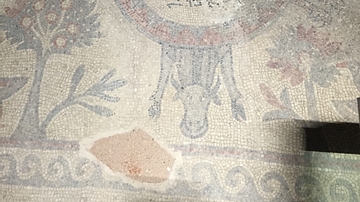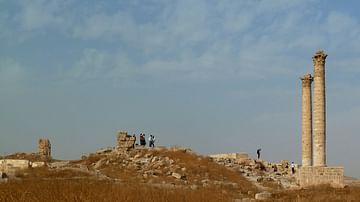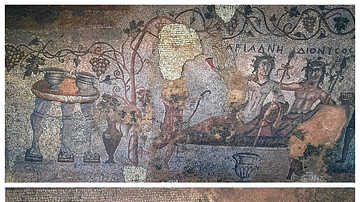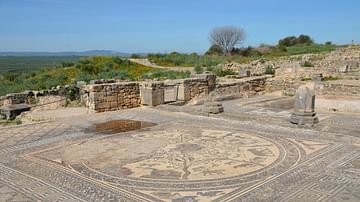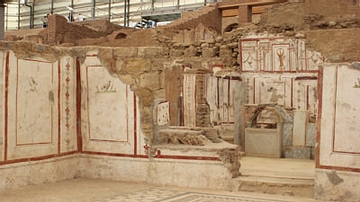Illustration
Orpheus playing his harp for the wild beasts, dates from about 194 CE and is the oldest of the Edessa/Urda mosaics. The artist's name is even engraved in the piece, "Bar Saged."
About the Author
Cite This Work
APA Style
III, R. J. (2015, October 14). Orpheus Mosaic: Edessa/Urda/Haleplibahçe Mosaics. World History Encyclopedia. Retrieved from https://www.worldhistory.org/image/4123/orpheus-mosaic-edessaurdahaleplibahce-mosaics/
Chicago Style
III, Ronnie Jones. "Orpheus Mosaic: Edessa/Urda/Haleplibahçe Mosaics." World History Encyclopedia. Last modified October 14, 2015. https://www.worldhistory.org/image/4123/orpheus-mosaic-edessaurdahaleplibahce-mosaics/.
MLA Style
III, Ronnie Jones. "Orpheus Mosaic: Edessa/Urda/Haleplibahçe Mosaics." World History Encyclopedia. World History Encyclopedia, 14 Oct 2015, https://www.worldhistory.org/image/4123/orpheus-mosaic-edessaurdahaleplibahce-mosaics/. Web. 05 Jul 2025.



